#dosidicus gigas
Note
may i humbly request a humboldt squid? also i love this blog cephalopods are the coolest. i help to care for a ruby octopus who has just entered senescence and this blog is helping to make me happier during a very sad time.
I'm happy this blog can bring you joy in a dispiriting time <3
Here are your humble humboldts

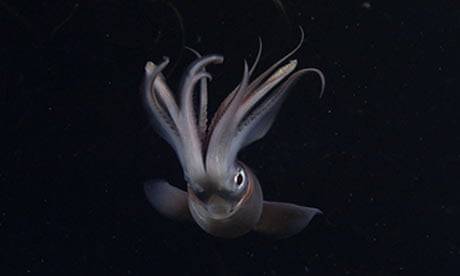





Daily Cephalopod #49
#squid#humboldt squid#dosidicus gigas#jumbo squid#daily cephalopod#squid mail くコ:彡#GOOBERS!!!#cephalopod#cephalopods#marine life#marine critters#marine creatures#marine animals#marine biology#ocean creatures#ocean critters#ocean life#ocean animals#sea life#sea creatures#sea animals#aquatic life#biology#zoology#animals
192 notes
·
View notes
Text
Props to me cuz I forgot how big Humboldt Squids were.
I was like: “they’re just a lil guy 🥰” forgetting they were EIGHT FUCKING FEET

13 notes
·
View notes
Text

7 notes
·
View notes
Text
So a while back I made this post

And it became very popular. While many people already knew, I did get some asking why humboldt squids are scary. So for this Wet Beast Wednesday I'm going to teach you why you should be afraid, or at least respectful, of molluscoid menace that is the humboldt squid.

(image: a humboldt squid)
Known to scientists as Dosidicus gigas and to many others as the jumbo squid, pota, jibia, and diablo rojo, the humboldt squid is the 5th largest squid in the world and the largest of the flying squids. Don't worry, it can't actually fly. They reach an average mantle length (tat's excluding the head and arms) of 1.5 meters, with some specimens reaching up to 2 meters (6.5 ft) in mantle length. The arms can reach up to another meter in length. Adults can weigh up to 50 kg (150 lbs), with females generally being larger than males. They live in the Pacific along the cost of the Americas, from the tip of South America up to California in North America. Some individuals have been known to travel farther north, up to Alaska, which is outside of their historical range. It is possible that as the ocean warms, their native range will continue to expand north.

(image: a humboldt squid releasing ink as a defense mechanism)
Humboldt squids reproduce in deep waters, and as a result we don't know much about their courtship. Males use a modified arm called the heterocotylus to transfer sperm into the female's mantle. She then lays a transparent, gelatinous egg mass that is left to float in the water column. These masses can range between 1 and 4 meters in diameter can can contain up to 4 million eggs. Hatchlings receive no parental care and most will die before adulthood. They grow extremely rapidly, likely as a self-defense against cannibalism by larger squids. Like many squid, humboldts only live for a year and die shortly after mating.

(image: a humboldt squid next to a much braver diver than I will ever be)
As with most cephalopods, the humboldt squid has cells called chromatophores that allow it to change color. Cameras attached to captured and released specimens have show two types of color-changing behavior: flashing and flickering. Flashing is when the animal changes rapidly between red and white. This is done in the presence of other squid and is likely a means of communication, possibly a form of courtship or warning to stay away. Flickering is when waves of red and white travel down the body. This is likely a form of camouflage to blend in with light flickering through the water. In addition to flashing and flickering, cameras have seen multiple forms of color changes and communication behaviors, indicating that they have a rich social life. The red color the squid turns when hunting contributes to its nickname amongst Mexican fishermen: "diablo rojo", the "red devil".

(gif: humboldts changing color)
So all that sounds pretty normal, why are they scary? Well that comes down to their feeding behavior and aggression. Humboldt squids hunt in shoals that can include thousands of members and go into feeding frenzies that can make shark feeding frenzies look like a child's tea party. They are infamous for their aggression and there are many stories of them attacking divers and fishermen. Not even they are immune to their predation, as multiple studies have found between a half and a quarter of all dissected specimens have recently fed on others of their species. Cannibalism may make up a major portion of their diet, though cannibalistic behavior seems to increase in response to stress. Their typical diet consists of fish, crustaceans, and other squids. Humboldts typically keep their two long tentacles coiled up between their arms, only for them to suddenly lash out and grab prey. These tentacles have multiple sharp hooks that have been reported to cause severe cuts in humans. Captured prey is then pulled in toward the beak and consumed. Feeding happens so fast that scientists need to us high-speed cameras to record the capture as the tentacles move so fast they prey can be caught and reeled in between frames. Eating is also fast enough that they can grab a hooked fish and skeletonize it in the time it takes a frustrated angler to pull their catch in. And if that wren't enough, they also engage in cooperative hunting, working together to catch prey. When not feeding or being hunted, they have been described as curious, though they often react to unfamiliar stimuli with aggression. Some divers have reported that humboldts will come investigate them and even act friendly, though I can't say I'd be willing to try it.

(gif: a squid attacking a camera)
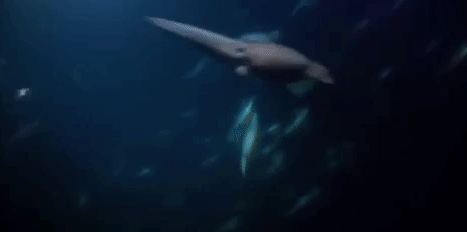
(gif: hunting squid)
Numerous fishermen's tales and news stories tell of attacks on humans, but the squid do have a reason to not like us. They are fished heavily, especially off the coat of Mexico and are the most important squid for commercial fisheries. Humboldt squids make up about a third of all squid fished every year and are the most popular food squid. Squid meat is saturated with ammonium chloride, which they use for buoyancy, and must be prepared to remove the taste before eating. Not much is known about threats to conservation, though some speculate that overfishing and global warming disrupting their food supply could threaten the population. They are listed as data deficient by the IUCN. As scary as they might be, humboldt squids serve a very important ecological role in their territories, both as primary predators and as prey to sharks and toothed whales, and more research on their sustainability and conservation needs is important.
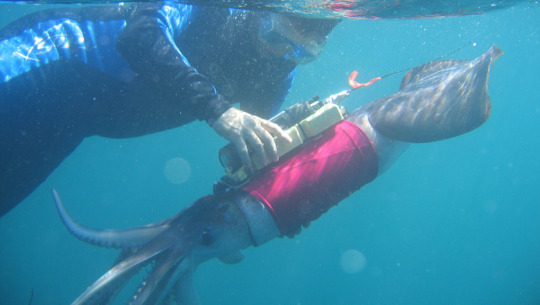
(image: a scientist attaching a crittercam to a humboldt squid)
#wet beast wednesday#marine biology#biology#zoology#animals#ecology#animal facts#humboldt squid#jumbo squid#squid#cephalopod#that last picture is adorable#he has a little vest!
864 notes
·
View notes
Text
#tfw you get aggressively booped by a Humboldt squid 😳
Growing up to two meters (nearly seven feet) long, Humboldt squid (Dosidicus gigas) are formidable predators that hunt krill and a variety of fishes. These scrappy squid hunt in large numbers along the coasts of both North and South America, from Chile to Baja California.
Researchers at MBARI have suggested that, as they hunt, these squid communicate with each other using changing patterns of light and dark pigment on their skin. The changes are visible even in the darkest depths of the ocean because the squids’ entire bodies glow in the dark, so the patterns are backlit like words on an e-reader screen.
371 notes
·
View notes
Text
I have tried to choose a wide distribution of animals representing many different clades, aiming for relatively intelligent species within their respective clade. There are only 12 poll options possible, so no asking “what about X?” Inevitably some species will have to stand in for a much broader class than others, e.g., the Humboldt squid for all cephalopods. (But the Humboldt squid is probably a good choice: they’re fairly gregarious and cooperative, unlike the octopus.)
Uplifted species will have the capacity for language, abstract thought, tool use, episodic memory, planning, and self-awareness. Their cognition may in other respects be radically different from our own, especially if they are not mammals.
67 notes
·
View notes
Text
youtube
Celebrating Cephalopods
Dumbo octopus (Grimpoteuthis)
Pacific bigeye octopus (Octopus californicus)
Japetella octopus (Japetella)
Humboldt squid (Dosidicus gigas)
Black-eyed squid carrying an eggsac (Gonatus)
North Pacific giant octopus (Enteroctopus dolfeini)
Cirrate octopus (Cirrata) P
acific red octopus (Octopus rubescens)
via: MBARI (Monterey Bay Aquarium Research Institute)
#cephalopod#octopus#octopod#squid#mollusk#ocean#deep sea#animals#nature#marine biology#video#Youtube
45 notes
·
View notes
Text


Dosidicus gigas
123 notes
·
View notes
Text
Uncharismatic Fact of the Day
The humboldt squid has some of the most impressive reproductive capabilities of any cephalopod! Although they only live 1-2 years, a single female can lay up 20 million eggs!
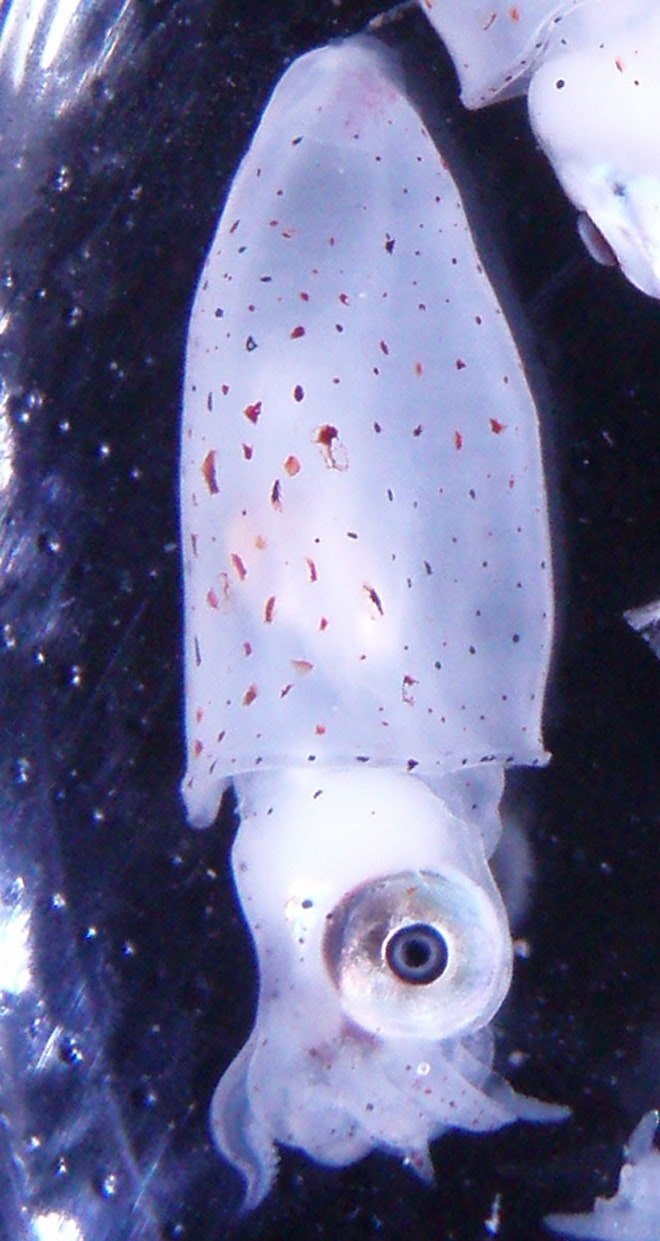
(Imgage: A baby humbolt squid (Dosidicus gigas) by Danna Staaf)
If you like what I do, consider buying me a ko-fi!
#humboldt squid#Oegopsida#Ommastrephidae#squids#cephalopods#mollusks#invertebrates#uncharismatic facts
210 notes
·
View notes
Photo

A protein extracted from squid may help increase tissue growth for regenerative medicine
Collagen is the basic protein that makes up the intercellular matrix, or in other words, the environment for the connective tissue cells of our body, such as tendons, bone, and cartilage. It looks like long threads, woven into three-dimensional networks. This, in turn, creates a kind of a tissue scaffold.
Due to the fact that collagen fibers are durable, elastic, and also serve as signals that determine the cell's so-called destiny, in medicine they are used as an environment to accelerate growth and differentiation of tissues, for example in wound healing. Most often such materials are artificially synthesized from collagen dissolution. However, even the most advanced technologies are unable to create collagen "networks" that exactly repeat the structure of a natural cellular environment, most favorable for its regeneration, or in other words, tissue repair.
Scientists from Immanuel Kant Baltic Federal University (Kaliningrad) with their colleagues from Voronezh State University (Voronezh) have proposed to use natural collagen extracted from Dosidicus gigas squid as tissue scaffold for growing cells instead of artificially synthesized collagen.
Read more.
#Materials Science#Science#Squid#Proteins#Biomaterials#Tissue engineering#Collagen#Medical technology
22 notes
·
View notes
Text
Animal of the Day!
Humboldt Squid (Dosidicus gigas)
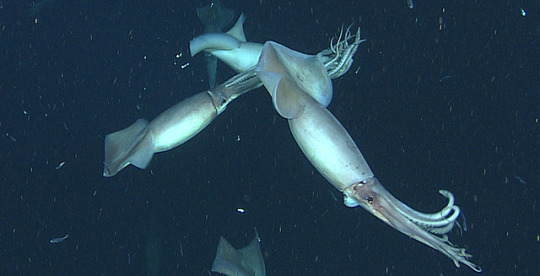
(Photo from Monterey Bay Aquarium)
Conservation Status- Data deficient (Data inadequate to determine a threat category)
Habitat- Pacific Ocean off North, Central, and South America
Size (Weight/Length)- 50 kg; 2 m
Diet- Small fish; Crustaceans; Cephalopods; Small sharks
Cool Facts- Also called the jumbo squid, the Humboldt squid is true to its name thanks to its massive size. Females are generally larger than the males, but both are equally impressive. Capable of reaching speeds of 24 kilometers per hour, Humboldt squid chase down schools of fish with a voracious appetite. Like many squid, Humboldt squid can rapidly change color for both camouflage and defense from predators. Found at depths of 700 meters, these squid are a popular food across the world. Despite being aggressive towards humans while feeding, they are curious towards divers and display incredible intelligence when passive.
Rating- 11/10 (Maybe not the Kraken but still impressive!)
#Animal of the day#Animals#Squid#Marine animals#Tuesday#August 2#Humboldt squid#Jumbo squid#biology#science#conservation#the more you know
112 notes
·
View notes
Text

100 Days of Sea Creatures Day 98 - Humboldt Squid (Dosidicus gigas)
By Gosh by Golly! There’s only two days left!
#artists on tumblr#artists on instagram#drawing challenge#sea creature art#drawing daily#sea creatures#deep sea creatures#ocean art#marine invertebrates#humboldt squid#squid
2 notes
·
View notes
Text
Bisexuality is common in some species of squids.
Citation:
Hoving, HJ.T., Fernández-Álvarez, F.Á., Portner, E.J. et al. Same-sex sexual behaviour in an oceanic ommastrephid squid, Dosidicus gigas (Humboldt squid). Mar Biol 166, 33 (2019). https://doi-org.ezproxy.lib.calpoly.edu/10.1007/s00227-019-3476-6
#it's a really interesting article actually#if you have a means of accessing the link please check it out!#some of the authors helped write similar articles that are also great#cephaloposting#cephalopod#squid#squid facts
7 notes
·
View notes
Text


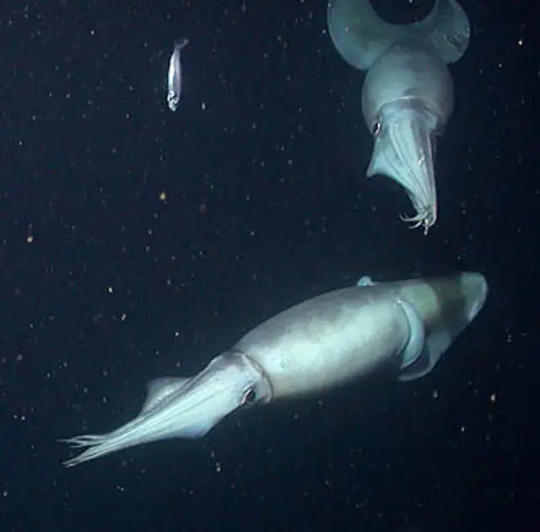



The Humboldt squid (Dosidicus gigas), also known as jumbo squid, jumbo flying squid, Pota, diablo rojo, calamar gigante, or Jibia is a type of large, predatory squid and the only known species of the genus Dosidicus. They are native to the eastern Pacific having historically occurred from Tierra del Fuego north to California, though in recent years these cephalopods have begun traveling further and further north as far as British Columbia and Alaska. They typically occur at 660 to 2,300ft (200 – 700m) deep but often travel to the surface at night. These cephalopods often travel together in shoals up to 1,200 strong, and feed mainly on fish, crustaceans, cephalopods, and copepods. The squid uses its barbed tentacle suckers to grab its prey and slices and tears the victim's flesh with its beak and radula. While humbolt squid often work together to hunt prey, they are also known cannibals which regularly attack injured or vulnerable squid in their shoal. Reaching up to 5ft (1.5m) long and 110lbs (50kg) in weight, the Humboldt squid is the largest of the Ommastrephid squids, yet despite there large size these squids are capable of regularly cruising at speeds upwards of 15mph (24 km/h) thanks to there power jet siphons and two triangular fins. Like other members of the subfamily Ommastrephinae, they possess chromatophores which enable them to quickly change body coloration, in a process known as metachrosis they signal to other squid by flashing between the colours red and white at 2–4 Hz, said flashing can be modulated in frequency, amplitude and in phase synchronisation with each other. When spawning humbolt squids lay gelatinous egg masses that are almost entirely transparent and float freely in the water column, said masses vary in size based on the size of the mother from anywhere of 5,000 to 4.1 million eggs. Under ideal conditions a humbolt squid may live a little over 2 years.
#pleistocene#pleistocene pride#pliestocene pride#squid#humboldt squid#jumbo squid#pota#diablo#rojo#calamar gigante#jibia#flying squid
3 notes
·
View notes
Text
Bioluminescent organisms pdf files
BIOLUMINESCENT ORGANISMS PDF FILES >>Download
vk.cc/c7jKeU
BIOLUMINESCENT ORGANISMS PDF FILES >> Leia online
bit.do/fSmfG
Request PDF | Characterising the Bioluminescence of the Humboldt Squid, Dosidicus gigas (d'Orbigny, 1835): One of the Largest Luminescent Animals in the Biológicos|Bioluminescence of Fungi, Millipede and Marine Organisms: Chemical and Biological. Aspects. Beneficiário|Fellow: Douglas Moraes Mendel Soares. bioluminescence, 165 biomarker, 165 MOL file format, 946 molal, 946 This value is dependent on the number of organisms used in its assessment.
https://www.tumblr.com/vetasasawix/697623581994123264/sirman-mirra-300-pdf-merge, https://www.tumblr.com/vetasasawix/697623982593245184/nitro-pdf-pro-10-crack-keygen, https://www.tumblr.com/vetasasawix/697624125146021888/sd355t-pdf-file, https://www.tumblr.com/vetasasawix/697624125146021888/sd355t-pdf-file, https://www.tumblr.com/vetasasawix/697622804607139840/neoclasicismo-arquitectura-pdf-merge.
0 notes
Text
Bioluminescent organisms pdf files
BIOLUMINESCENT ORGANISMS PDF FILES >>Download
vk.cc/c7jKeU
BIOLUMINESCENT ORGANISMS PDF FILES >> Leia online
bit.do/fSmfG
Request PDF | Characterising the Bioluminescence of the Humboldt Squid, Dosidicus gigas (d'Orbigny, 1835): One of the Largest Luminescent Animals in the Title from first page of PDF file (viewed Feb. Bioluminescence, the emission of visible light by living organisms is widely used in biosensors.
https://www.tumblr.com/xehelumum/697277187624157184/logik-pc14-01-pma-manual, https://www.tumblr.com/xehelumum/697277187624157184/logik-pc14-01-pma-manual, https://www.tumblr.com/xehelumum/697277298782732288/alor-chaves-pdf995, https://www.tumblr.com/xehelumum/697277298782732288/alor-chaves-pdf995, https://www.tumblr.com/xehelumum/697277187624157184/logik-pc14-01-pma-manual.
0 notes